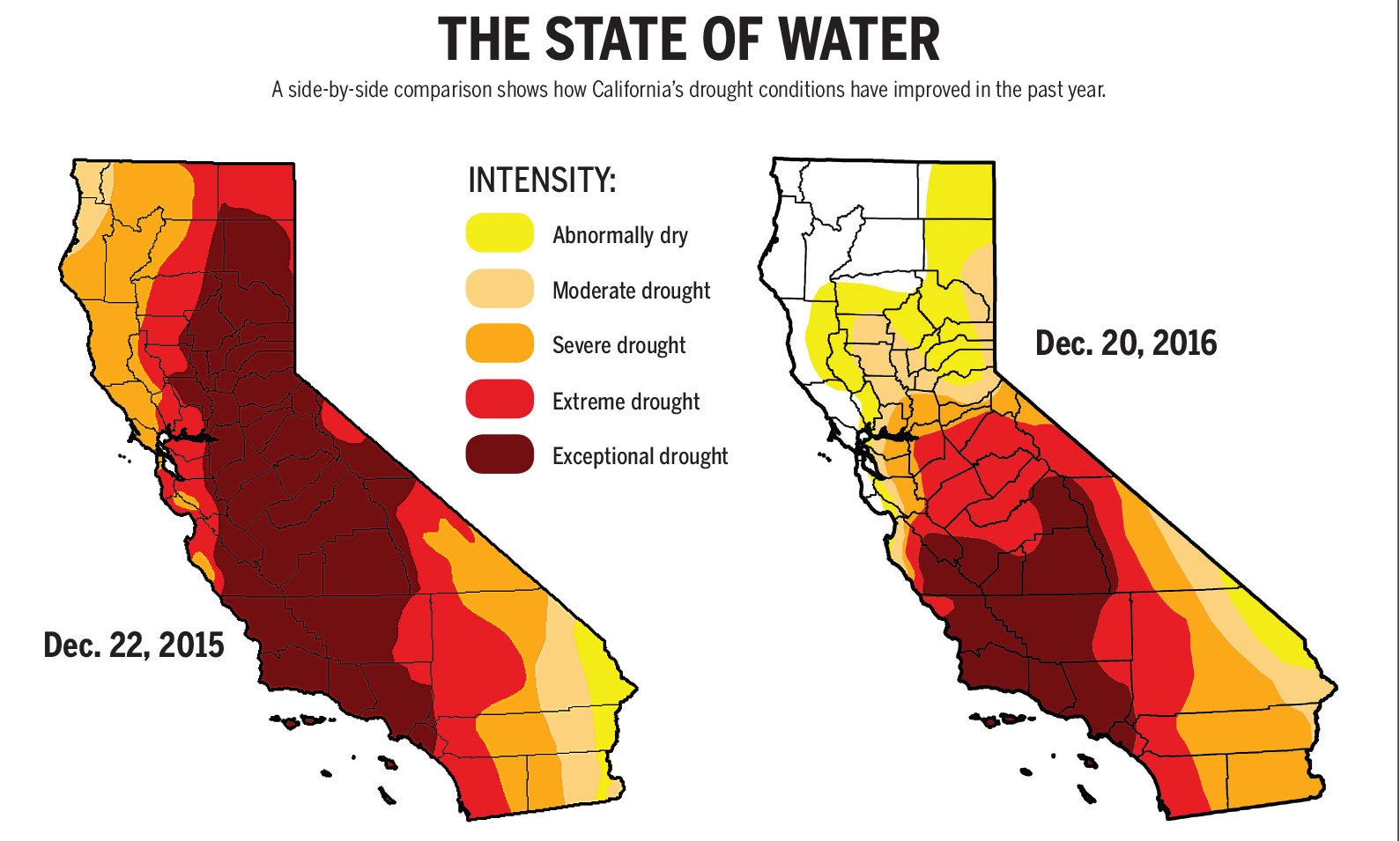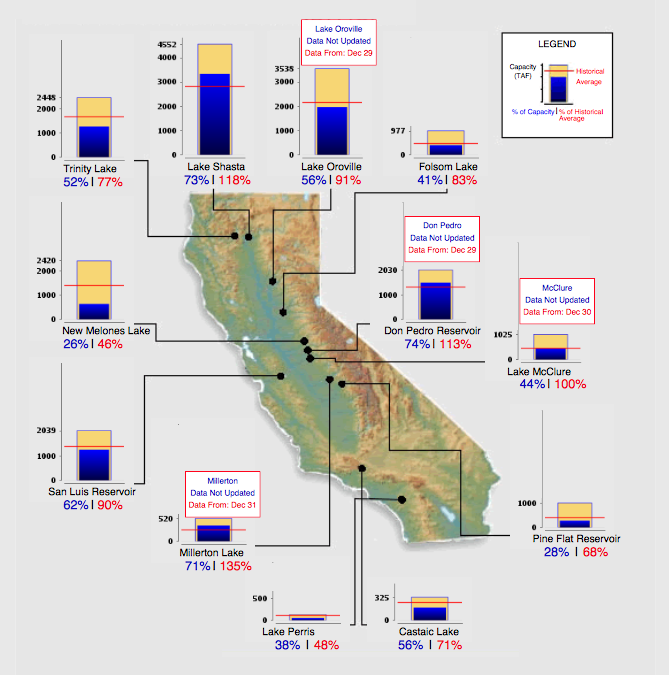It’s no secret that California has been in a major drought for the last five years. This has resulted in larger and more aggressive wildfires during that time, keeping firefighters busy and resulting in increased levels of acreage burned. However, the California drought conditions are actually better than some experts predicted, and metrics other than rain and snowfall levels may indicate impending recovery.

2015 vs 2016 conditions, Source: U.S. Drought Monitor
Complex Water Resources
Most of California has a naturally dry climate, and it relies on a complex system of aqueducts, aquifers, and reservoirs to transport and store water resources. As such, the state of the drought from a human-use perspective can be gauged by how full the reservoirs are compared to historical averages.
As the map depicts, many California reservoirs are at or near historical average levels. Also, these levels do not yet take into account the snowpack melts during the spring season, which should increase the reservoir levels even further. While California is far from having a comfortable amount of water to survive future potential droughts, this wet season should provide at least a temporary reprieve from the drought conditions and restrictions.
La Niña Less Severe than Anticipated
The El Niño event in 2015 which was expected to be one of the strongest on record resulted in little rainfall to ease the dry conditions. An El Niño event is marked by warmer-than-usual waters in the mid-latitudes of the Pacific Ocean, and often leads to excess rainfall across the West Coast. El Niño events are often followed by La Niña events, which are very dry and lead to drought. Fortunately, 2016 is proving to be much wetter than a typical La Niña event and is even producing moisture that is helping to mitigate drought conditions rather than worsen them.
Why the California Drought Matters
The ongoing California drought has caused major ecological damage, led to severe water use restrictions, and contributed to major fire seasons. While this may seem like an issue specific only to Californians, the drought has ripple effects on the entire country.
California produces a majority of the fresh produce consumed nationwide. Seventy percent of total fruit and tree nut production and 55 percent of vegetables come from the state. Agriculture consumes 80 percent of California’s water resources on an average year, and a lack of water has led to lower crop yields and higher-priced produce nationwide.
Sources:
California’s Drought Could Upend America’s Entire Food System
California Sees Largest Drought-Free Patch Since 2013
California Drought Farm and Food Impacts





One Comment